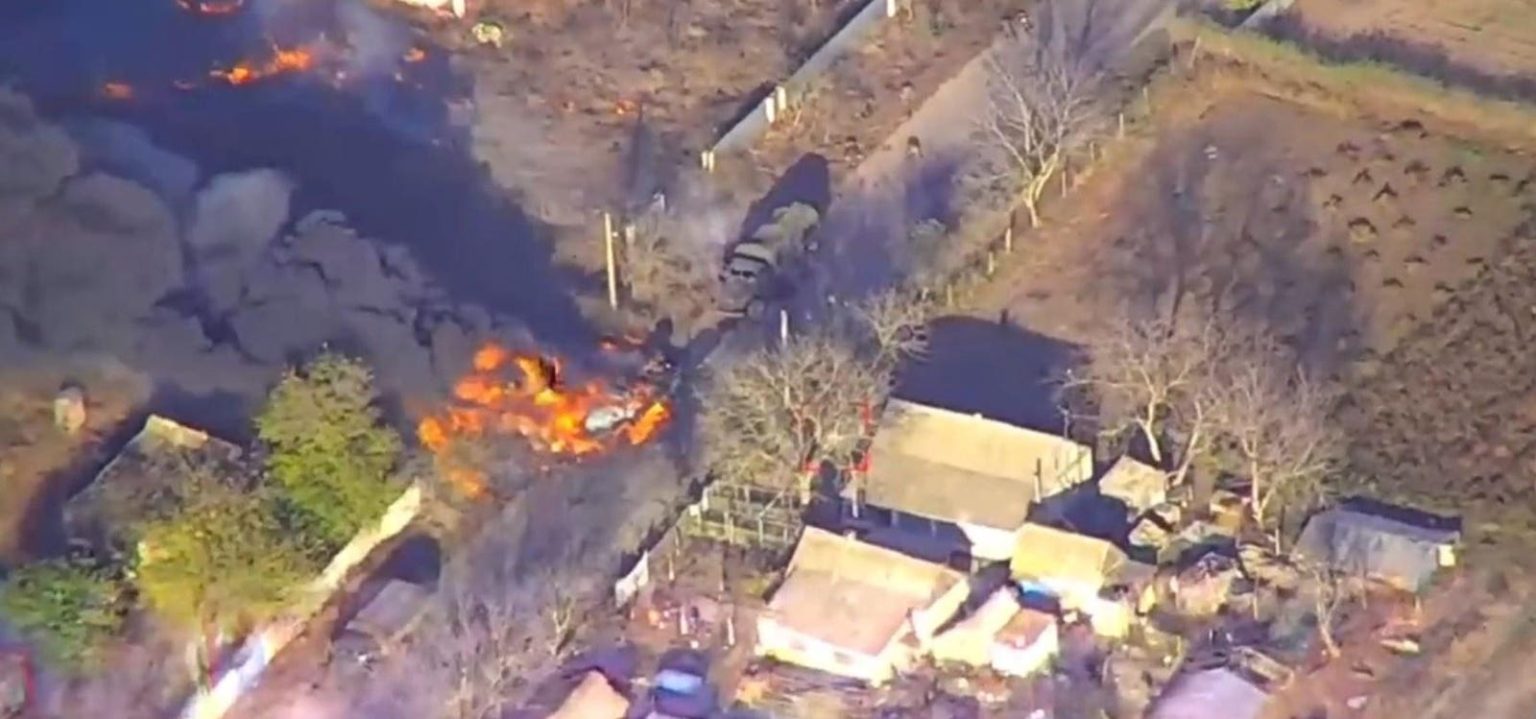It’s a classic ambush tactic. Blow up the first and last vehicle in a convoy, trapping the other vehicles and their crews between the wreckage. Then pick off the survivors.
Even when it doesn’t perfectly work, this tactic can be devastating. Ukrainian troops practiced the tactic to devastate a Russian tank regiment in Brovary, outside Kyiv, in March 2022. They repeated it in Vuhledar this February.
And they did it again in Hladkivka, in southern Ukraine’s Kherson Oblast, on or before Saturday. A convoy with dozens of Russian military trucks—Urals and Kamazs—apparently was hauling ammunition toward the front line when Ukrainian rockets exploded at the front and back of the convoy.
The rockets reportedly were M30s fired by Ukraine’s American-made High-Mobility Artillery Rocket Systems. Each M30 peppers its target with 180,000 tungsten balls, just a handful of which could perforate a truck and destroy its cargo.
And if the cargo is ammo, expect secondary explosions. Much of the Russian convoy in Hladkivka escaped the rocket ambush. “The attack induced panic among Russian military personnel, causing them to disperse in the surviving vehicles,” the independent Conflict Intelligence Team noted. But the rockets and subsequent secondary blasts reportedly destroyed 16 trucks and killed 25 Russians.
The ambush might not have been possible just a few weeks ago. While Ukraine’s HIMARS with their 40-mile-range M30 rockets can strike across Russian-occupied southern Kherson Oblast, the launchers need cueing by satellites, drones or troops on the ground. The recent strike clearly depended on drone reconnaissance; a drone remained overhead to assess the damage as the rockets rained down.
Ukrainian drones increasingly range freely across Kherson—one consequence of a painstaking effort by Ukrainian forces this summer to achieve local air-superiority over the oblast.
Ukrainian pilots, gunners, drone-operators and electronic-warfare specialists hunted down Russian air-defenses and—perhaps more critically—targeted Russian electronic-warfare systems in order to keep the Russians from jamming Ukrainian drones.
Today the air over Kherson belongs to Ukrainian drone-operators. “This attack [in Hladkivka] became possible, in part, because Ukrainian drones can penetrate deep into the rear of the [Russian armed forces],” CIT explained. “According to some pro-Russian bloggers, this is attributed to the inadequacy of Russian electronic warfare.”
This local aerial dominance, however geographically constrained, has been a profound enabler. Ukrainian marines starting in mid-October crossed the Dnipro River and liberated the settlement of Krynky from its Russian occupiers, seizing a bridgehead that could lead to further Ukrainian advances into southern Kherson. Every mile the Ukrainians advance here loosens the Russians’ grip on the adjacent Crimean Peninsula.
Russian troops and their convoys no longer can venture out into the open in Kherson without drawing the attention of Ukrainian drones and the artillery and rockets they direct. Just ask the Russian air-defense team that got caught trying to redeploy on a motorbike. And ask the unfortunate crews of those trucks the Ukrainians blasted in Hladkivka.
The Ukrainians “constantly fire at us with artillery, using cluster munitions and, most importantly, they use a whole horde of [first-person-view] drones and UAVs with air-drops, which work around the clock, preventing the evacuation of the wounded and the delivery of ammunition,” one Russian military reporter wrote.
If there’s any comfort for the Russians to find in the Hladkivka ambush, it’s that it could’ve been worse. If the initial rocket strikes had succeeded in trapping the whole convoy, many more Russians might’ve died.
What should worry the Russians the most isn’t the loss of a few trucks. It’s the implication of escalating Ukrainian strikes on Russian supply lines along southern Ukraine—and especially in Kherson.
It’s not for no reason Russian regiments haven’t been able to organize a mechanized counterattack to push the Ukrainian marines out of Krynky and back across the Dnipro. The Kremlin is struggling to supply these regiments. “Imagine how tightly the enemy controls the space around the bridgehead from the air,” one Russian soldier mused.
Read the full article here





